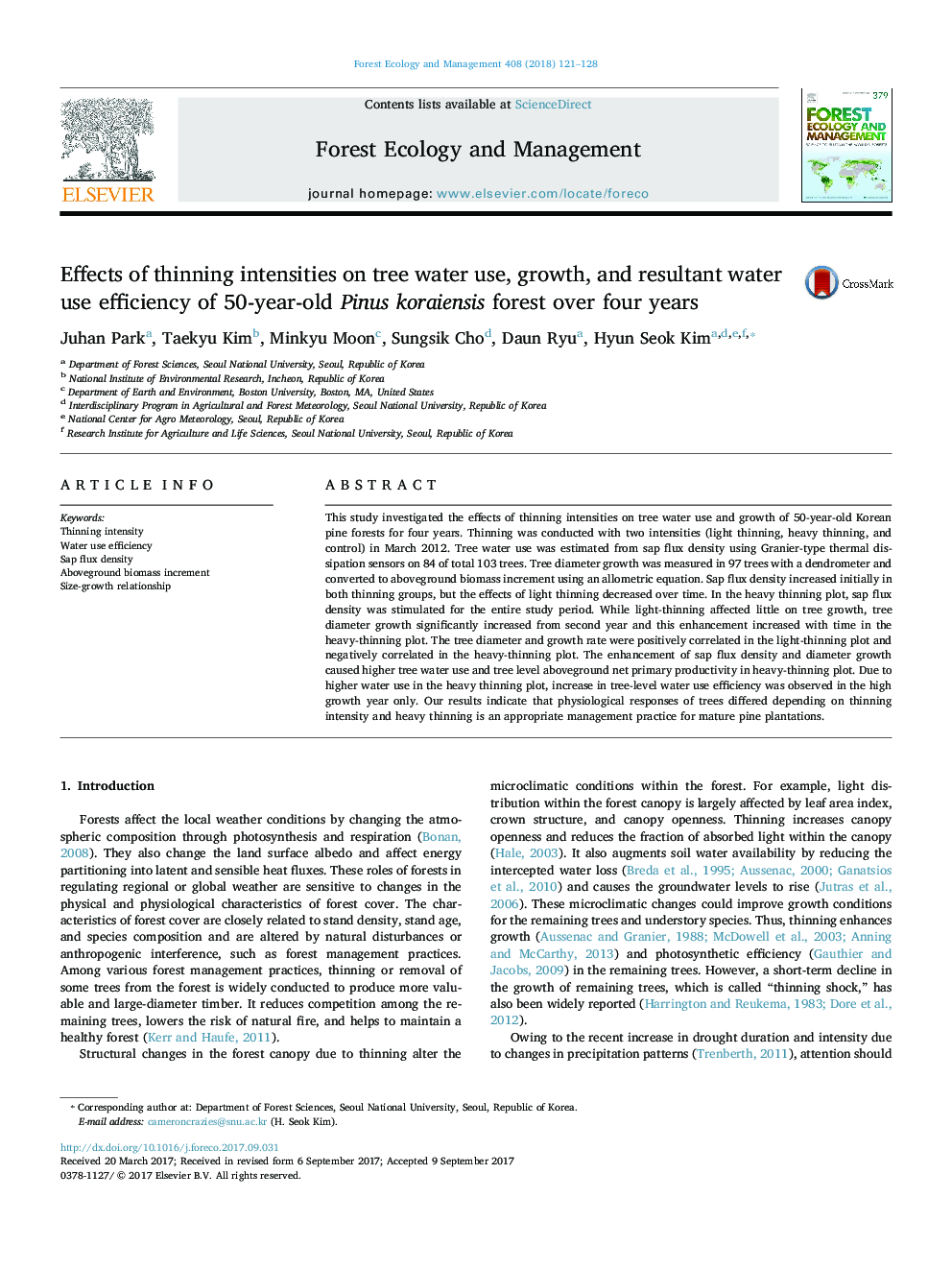| Article ID | Journal | Published Year | Pages | File Type |
|---|---|---|---|---|
| 6541913 | Forest Ecology and Management | 2018 | 8 Pages |
Abstract
This study investigated the effects of thinning intensities on tree water use and growth of 50-year-old Korean pine forests for four years. Thinning was conducted with two intensities (light thinning, heavy thinning, and control) in March 2012. Tree water use was estimated from sap flux density using Granier-type thermal dissipation sensors on 84 of total 103 trees. Tree diameter growth was measured in 97 trees with a dendrometer and converted to aboveground biomass increment using an allometric equation. Sap flux density increased initially in both thinning groups, but the effects of light thinning decreased over time. In the heavy thinning plot, sap flux density was stimulated for the entire study period. While light-thinning affected little on tree growth, tree diameter growth significantly increased from second year and this enhancement increased with time in the heavy-thinning plot. The tree diameter and growth rate were positively correlated in the light-thinning plot and negatively correlated in the heavy-thinning plot. The enhancement of sap flux density and diameter growth caused higher tree water use and tree level aboveground net primary productivity in heavy-thinning plot. Due to higher water use in the heavy thinning plot, increase in tree-level water use efficiency was observed in the high growth year only. Our results indicate that physiological responses of trees differed depending on thinning intensity and heavy thinning is an appropriate management practice for mature pine plantations.
Related Topics
Life Sciences
Agricultural and Biological Sciences
Ecology, Evolution, Behavior and Systematics
Authors
Juhan Park, Taekyu Kim, Minkyu Moon, Sungsik Cho, Daun Ryu, Hyun Seok Kim,
